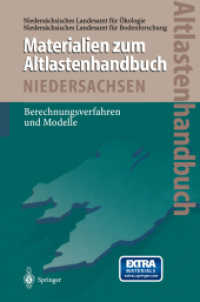Full Description
Working with Communities in Health and Human Services embeds community participation within social science theory about community and participation and provides students with both the concepts and practical tools essential for increasing community participation in health and human services settings.
Theory and concepts for understanding the nature and different types of communities are combined with practical skills for working with communities. This approach enables students to contextualise what is meant by community participation, community development, and collaborative service and program development, with the skills needed by community practitioners.
Activites and case studies throughout the book are drawn from community health and social care practice and are used to illustrate the principles, approaches, and issues related to working with communities. The activities, when used in conjunction with the 'reflective practice' approach demonstrate that there are different ways to practice. The importance of integrating people's experiences with concepts and practical skills is a core theme in the text and provides the basis for learning and
working with communities.
Contents
Introduction Part 1: Understanding communities 1: What is community health and social care development? 2: What is community? 3: Community: Aboriginal Australian perspectives 4: Understanding and assessing community capacity Part 2 Approaches to working with communities 5: Conceptual approaches to working with communities 6: Practice frameworks for working with communities 7: Government roles in community health and social care development Part 3: Skills in working with communities in community health and social care development 8: Community decision-making 9: Community partnerships 10: Community leadership 11: Community planning 12: Building knowledge about community health and social care development







